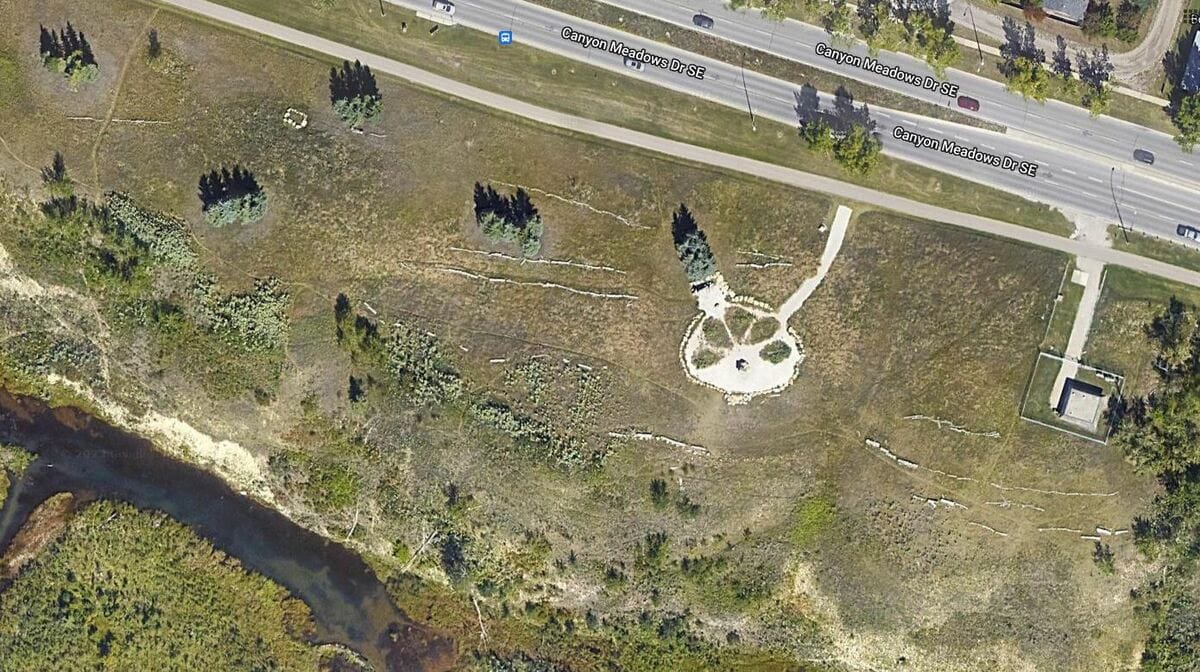- Calgary Citizen
- Posts
- Bee Boulevard Calgary: One man’s mission to save the bees
Bee Boulevard Calgary: One man’s mission to save the bees
Part of his goal is to create more sustainable living environments

A Calgary man is on a mission to save the bees by designing a seed mix that was suitable for native bees and using it here in Calgary. // Shutterstock
The buzz about bees is not just a passing phase.
Bees, after all, are responsible for pollinating our crops and ensuring that we have fruits, vegetables, and more. Without them, the world would be in big trouble.
That's why one man, David Misfeldt, decided to create the Bee Boulevard Calgary Facebook group back in 2017.
Misfeldt was previously in charge of maintaining the green spaces that separated communities in Calgary, but he was dissatisfied with the results of the usual methods of keeping these spaces weed-free.
“We kept cutting and spraying and doing all the same things, but the results weren’t very good, Misfeld says. “So instead of doing the same thing over and over and over again with no results I always wanted to naturalize a boulevard.”
Passion into practice
Misfeldt saw the Canyon Meadows area as the perfect fit for his passion project as all of the trees were dying in the centre median due to maintenance methods.
In collaboration with Alberta Parks, Misfeldt and an ecologist designed a seed mix that was suitable for native bees.
“If you look from Google Earth, I designed it as a flower with a couple of petals missing. So when I give a talk, I say I was playing ‘bee loves me, bee loves me not,’” he says.
Not only did Misfeldt want the park to be a sustainable home for native bees, but he also wanted to make it an experience for citizens to enjoy and learn about the importance of bees.
“We made a sand bed because bees also live in sand in the ground,” he says, adding there is a sign explaining that.
“There’s also a sign by a log that you can lift up to see the bees’ home and a sign at the entrance showcasing all the plants that are in the park.”
Misfeldt even found two endangered native bee species on the site during a routine sweep where beekeepers gently sweep the insects off of surfaces to relocate them.

David Misfeldt thought this area in Canyon Meadows was the perfect spot to test his passion project. A view from Google Earth.
Expanding the project
Once everything was running smoothly, Misfeldt invited schools to help with the project.
He thought he would only see a few students from environmental clubs show up and help, but he was proven wrong.
“Three schools ended up having their entire school on the site,” he says.
Because of the strong turnout, Misfeldt reached out to the David Suzuki Foundation. The group supplied 600 milkweed plants, the main species of plant on which a monarch butterfly will lay its eggs.
The site was visited by bee experts who gave talks to the students as they helped plant the milkweed during an outside classroom session.
Through the project, Misfeldt learned that native bees are crucial to pollination, and that introducing honey bee colonies can displace native species.
Honey bees from one hive alone can displace about 100,000 native bees, Misfeldt warns.
Creating more sustainable environments
After completing his project, Misfeldt began to notice some green space in Calgary that is not ideal for bee populations.
“I call it ‘show landscaping’ where trees are all planted in rows, but [the bees] don’t like that. They like to be in groups, but we keep designing tree-lined streets and killing them,” Misfeldt says.
“The city is spending all this money and getting the same results. Where I live, the trees were planted in the 90s and they’re still maybe two inches wide and six feet tall, and they’re all stressed out and they just keep replacing them. It’s a sterile environment.”
In order to continue on in his mission to help native bees and species thrive in our environment, Misfeldt hopes to work with farmers to turn ditches into nature sanctuaries.
“If the ditches were native flowers and plants instead of just having grass and weeds that need to be cut down into nothing, that would be beneficial for everyone,” Misfeldt adds.
Give back to nature
Misfeldt is also planning on designing landscapes for the sides of roads to include Indigenous designs to incorporate with the native plants.
“I want their ancestors to see that, though the land might have changed, they’re still here.”
The Bee Boulevard Calgary project was a community effort that involved government agencies, universities, schools, and bee experts. The project was even recognized by the Ministry of Environment, which sent a letter of gratitude to the team.
Misfeldt says the project shows that even small-scale efforts can make a big impact on the environment.
“It’s time we give back to nature,” he adds.
To learn more, visit the city’s urban beekeeping and licensing page.
Reply